From Philly and the Pa. suburbs to South Jersey and Delaware, what would you like WHYY News to cover? Let us know!
Among the 130 works of paintings, pastels and prints in the Philadelphia Museum of Art’s major retrospective of Mary Cassatt are a handful of handwritten letters.
Cassatt grew up, in part, in Philadelphia and studied at the Pennsylvania Academy of Fine Art. About 180 mostly unpublished letters between Cassatt and her family are archived at the museum. That is where co-curator Laurel Garber started to think about “Mary Cassatt at Work.”
“We were really struck by the recurring description of Cassatt’s work by family members and by Cassatt herself,” Garber said. “’Mary’s working like a beaver,’ a pervasive attention to her commitment to long days of artistic work.”
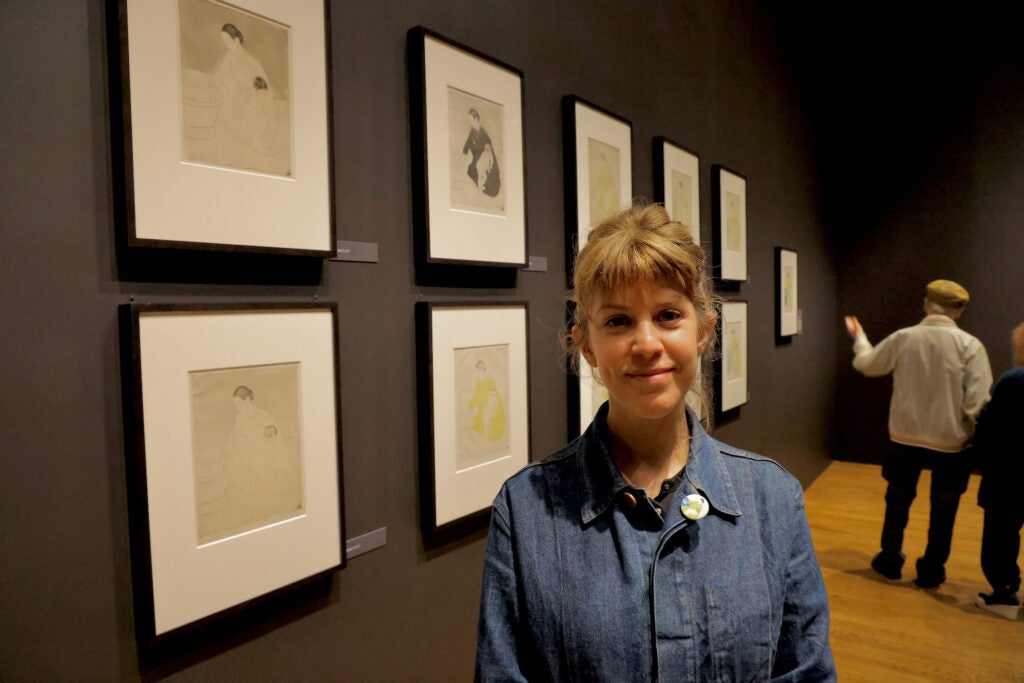
The letters show Cassatt, based in Paris, hiring studio models daily and spending entire working days in the trenches of painting. But she had to make a living. Her father insisted that if Cassatt wanted to pursue art, her practice would have to pay for itself.
“That makes Mame [a family nickname for Mary] very uneasy,” Cassatts’ father Robert wrote to her brother in Philadelphia. “She must either make sale of the pictures she has on hand or else take to painting pot boilers, as the artists say, a thing that she never yet has done and cannot bear the idea of being obliged to do.”
“Perhaps they thought this might encourage her to stop making art,” said co-curator Jennifer Thompson. “Of course, it has the opposite effect. It just spurs her on and encourages her to demonstrate how professional an artist she can be.”
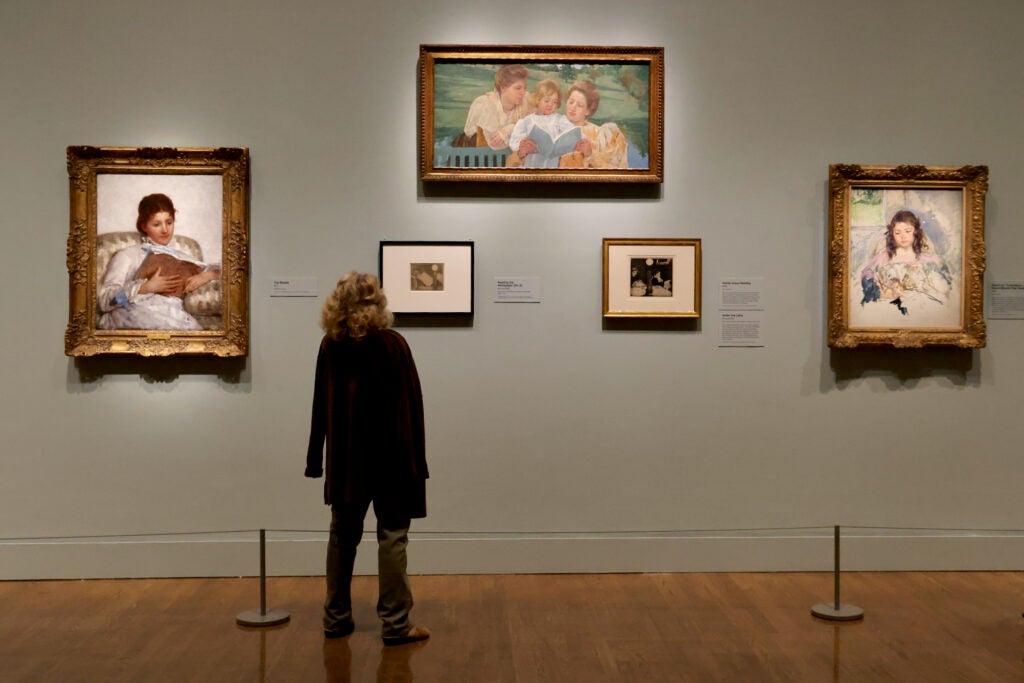
“Cassatt at Work” shows the tremendous creative and innovative energy the artist applied to her paintings, most of which appear to be leisurely scenes of mostly upper-class women: ladies in opera boxes, cuddling children, and seated in tea gardens.
In the world of impressionists, many artists are associated with particular subjects: Monet painted water lilies, Renoir painted cherub-cheeked girls and Cassatt painted mothers with children. Decades after her 1954 death, art historian Edgar Richardson described her body of works as “a world of perpetual afternoon tea.”
“Tea, clothes, and nursery; nursery, clothes, and tea,” Richardson wrote.
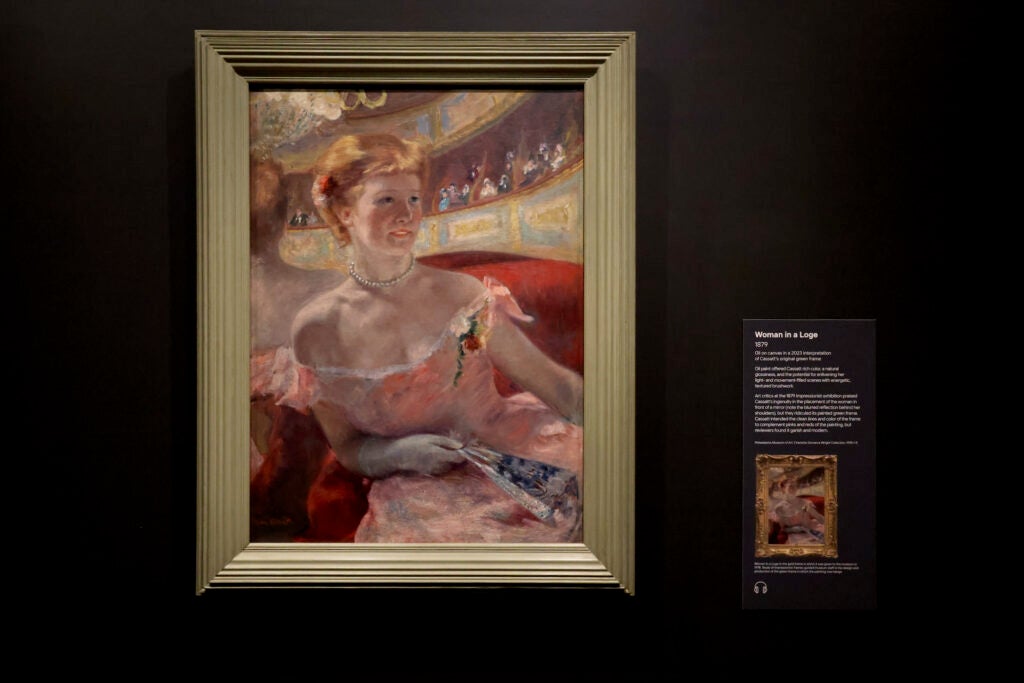
The exhibition shows how Cassatt was able to mine a wide range of actions and emotions out of the rich relationships between mothers and children. Mothers can be playful, gentle, tired or frustrated. Children can be gleeful, bored, fussy or sad.
“There are moments we might think of as being more leisurely, the tender moments between a woman and a child,” Thompson said. “There are other ones in which we see a woman breastfeeding a child. They’re the moments where they’re bathing a child, and the woman’s face – we see a little bit more of an exhaustion and tiredness and perhaps a sense of the repetition of these tasks.”
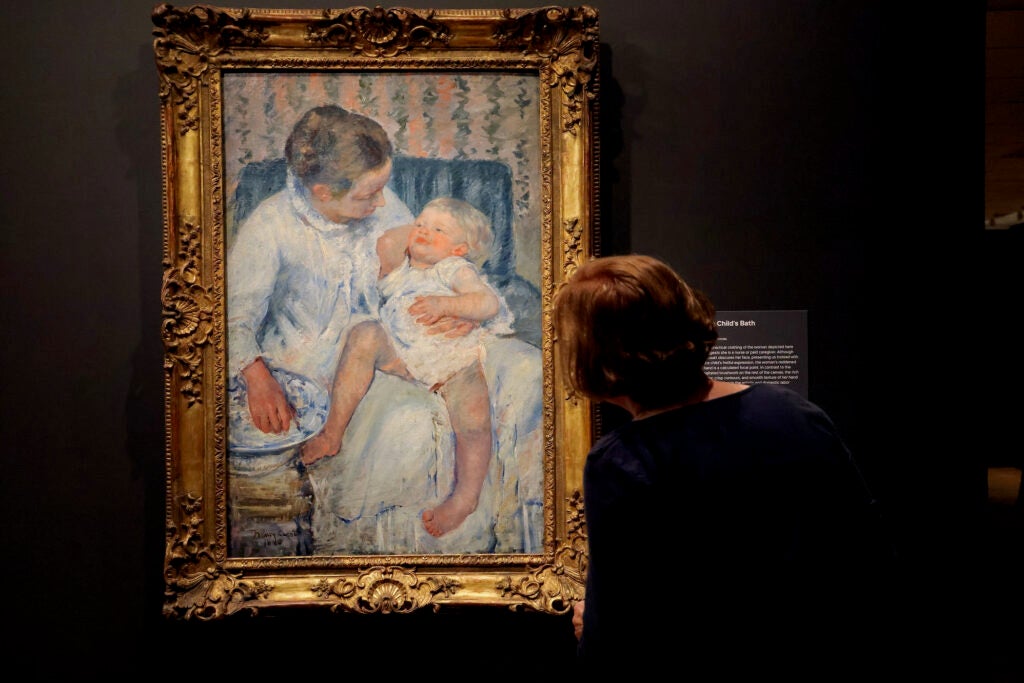
Not only was Cassatt working, the women in her paintings are working, too. Women taking care of children, or sewing. Even well-appointed society ladies fanning themselves in theater box seats are actively engaged in the work of seeing and being seen.
Often, Cassatt hired working-class women as models for her paintings.
“Even if she’s depicting a woman who seems to be of Cassatt’s class and is dressed in a beautiful, fashionable gown, their hands can give them away as being of the working class,” Thompson said. “Cassatt is attentive to work on so many different levels in her pictures.”
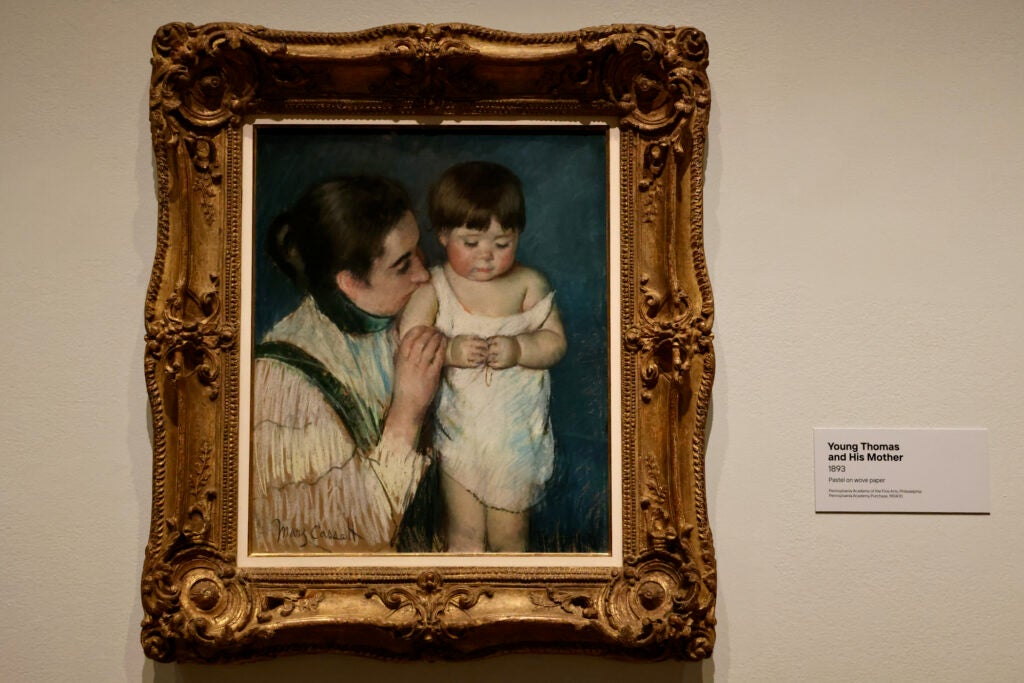
Cassatt was also an innovator. Not only by taking on the mantle of depicting women’s perspectives, but developing new technical techniques in her etchings and prints. “Cassatt at Work” features “Set of Ten,” an ambitious series of prints depicting daily life of Parisian women, inspired by Japanese woodblock prints.





